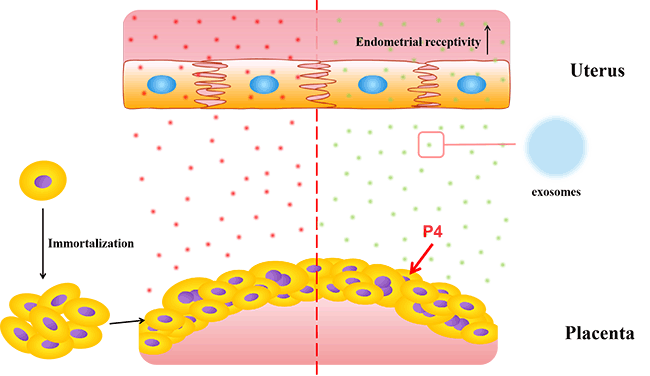- 著者
- Yusuke Takashima Kensuke Seto Yousuke Degawa Yong Guo Tomoyasu Nishizawa Hiroyuki Ohta Kazuhiko Narisawa
- 出版者
- Japanese Society of Microbial Ecology · The Japanese Society of Soil Microbiology
- 雑誌
- Microbes and Environments (ISSN:13426311)
- 巻号頁・発行日
- pp.ME18081, (Released:2018-12-08)
- 被引用文献数
- 30
Endofungal bacteria are widespread within the phylum Mucoromycota, and these include Burkholderiaceae-related endobacteria (BRE). However, the prevalence of BRE in Mortierellomycotinan fungi and their phylogenetic divergence remain unclear. Therefore, we examined the prevalence of BRE in diverse species of Mortierella. We surveyed 238 isolates of Mortierella spp. mainly obtained in Japan that were phylogenetically classified into 59 species. BRE were found in 53 isolates consisting of 22 species of Mortierella. Among them, 20 species of Mortierella were newly reported as the fungal hosts of BRE. BRE in a Glomeribacter-Mycoavidus clade in the family Burkholderiaceae were separated phylogenetically into three groups. These groups consisted of a group containing Mycoavidus cysteinexigens, which is known to be associated with M. elongata, and two other newly distinguishable groups. Our results demonstrated that BRE were harbored by many species of Mortierella and those that associated with isolates of Mortierella spp. were more phylogenetically divergent than previously reported.
- 著者
- Yue SU Qianru LI Qiaochu ZHANG Zhiming LI Xinxin YAO Yong GUO Longfei XIAO Xiangguo WANG Hemin NI
- 出版者
- The Society for Reproduction and Development
- 雑誌
- Journal of Reproduction and Development (ISSN:09168818)
- 巻号頁・発行日
- pp.2021-077, (Released:2021-10-22)
- 被引用文献数
- 11
Inadequate fetomaternal interactions could directly lead to pregnancy failure in dairy cows. Exosomes are widely involved in endometrial matrix remodeling, immune function changes, placental development, and other processes of embryo implantation and pregnancy in dairy cows. However, the role of exosomes derived from placental trophoblast cells in regulating the receptivity of endometrial cells and facilitating fetomaternal interaction remains unclear. In this study, bovine trophoblast cells (BTCs) were obtained from bovine placenta and immortalized by transfection with telomerase reverse transcriptase (TERT). Immortalized BTCs still possess the basic and key properties of primary BTCs without exhibiting any neoplastic transformation signs. Subsequently, the effect of trophoblast-derived exosomes (TDEs) on endometrial receptivity in endometrial epithelial cells (EECs) was determined, and the mechanism whereby TDEs and their proteins participate in the fetomaternal interaction during bovine pregnancy were explored. EECs were co-cultured with the exosomes derived from BTCs treated with progesterone (P4). Such treatment enhanced the expression of the endometrial receptivity factors, integrin αv, β3, Wnt7a, and MUC1 by changing the extracellular environment, metabolism, and redox balance in EECs via proteome alignment, compared with no treatment according to the DIA quantitation analysis. Our study demonstrated that trophoblast-derived exosome proteins are one of the most critical elements in fetomaternal interaction, and their changes may act as a key signal in altering endometrial receptivity and provide a potential target for improving fertility.
- 著者
- Annisa N. Lathifah Yong Guo Nobuo Sakagami Wataru Suda Masanobu Higuchi Tomoyasu Nishizawa Irfan D. Prijambada Hiroyuki Ohta
- 出版者
- Japanese Society of Microbial Ecology · The Japanese Society of Soil Microbiology
- 雑誌
- Microbes and Environments (ISSN:13426311)
- 巻号頁・発行日
- pp.ME19041, (Released:2019-07-20)
- 被引用文献数
- 9
Microbial colonization, followed by succession, on newly exposed volcanic substrates represents the beginning of the development of an early ecosystem. During early succession, colonization by mosses or plants significantly alters the pioneer microbial community composition through the photosynthetic carbon input. To provide further insights into this process, we investigated the three-year-old volcanic deposits of Mount Merapi, Indonesia. Samples were collected from unvegetated (BRD) and moss-covered (BRUD) sites. Forest site soil (FRS) near the volcanic deposit-covered area was also collected for reference. An analysis of BRD and BRUD revealed high culturable cell densities (1.7–8.5×105 CFU g–1) despite their low total C (<0.01%). FRS possessed high CFU (3×106 g–1); however, its relative value per unit of total C (2.6%) was lower than that of the deposit samples. Based on the tag pyrosequencing of 16S rRNA genes, the BRD bacterial community was characterized by a higher number of betaproteobacterial families (or genus), represented by chemolithotrophic Methylophilaceae, Leptothrix, and Sulfuricellaceae. In contrast, BRUD was predominated by different betaproteobacterial families, such as Oxalobacteraceae, Comamonadaceae, and Rhodocyclaceae. Some bacterial (Oxalobacteraceae) sequences were phylogenetically related to those of known moss-associated bacteria. Within the FRS community, Proteobacteria was the most abundant phylum, followed by Acidobacteria, whereas Burkholderiaceae was the most dominant bacterial family within FRS. These results suggest that an inter-family succession of Betaproteobacteria occurred in response to colonization by mosses, followed by plants.
